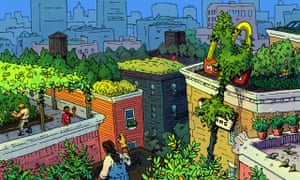The Sustainable Food and Farming program encourages students to have hands-on experience (denoted as “independent study” or
“practicum” for credit) in their field of interest, while they are still students. Because SFF supports such a large range of sustainable agriculture and food systems work, these independent studies are all unique.
Here are some awesome examples of SFF students who turned their passion into action in order to earn independent study credit toward their degree during the summer of 2023:
Datev Gevorkian
:
- Studied Effects of Tobacco Derived Nicotine as a Natural Insecticide
- Research based independent study
Excerpt from Datev:
“During this past summer of 2023, I, performed a series of trials against a common insect pest of the Potato plant known as the Colorado Potato Beetle (CPB). Tobacco-derived nicotine has shown promising results [as an insecticide] for insects that have developed resistance to commercially available conventional insecticides. In my trial, I had three 50-foot rows of Yukon Gold Potatoes in a plot with previously high CPB pressure. The rows were split into thirds, the first third being sprayed with tobacco tea, the middle row being a control group (this will help determine overspray and insects without treatment), and the final third being sprayed with spinosad; a popular choice of an organic insecticide among small organic farms and home gardeners. After scouting the next day, I saw a significant reduction in the CPB Larvae population (approximately 90%) compared to the control group. The group sprayed with spinosad acted very fast (within 38 minutes). I also noticed a reduced population (also around 90%) after scouting the next day. After my trials, I have determined that more research is needed to fully understand the effects of nicotine on the CPB as a natural insecticide although my small experiment seems promising.” Read more about Datev’s experiment here.
Emily Depina-Londono:
- Interned with Food Rescue US in Boston
- Created an English/Spanish resource guide connecting folks in Boston with free food distribution
Excerpt from Emily:
“This summer I interned with Food Rescue US, a nationwide nonprofit across 43 states that collaborates with grocery stores and other donors to distribute surplus and leftover food to the community. Using their app and website, Food Rescue uses volunteers to transfer food surplus from local businesses to agencies that work with people experiencing food insecurity, such as food pantries, food shelters. My learning objectives for this semester were to learn about the logistics of running a nonprofit, participate in food rescue, and food donations, practice researching and collecting information, build outreach and communication skills, learn how we can be sustainable with our food use, and help my community.
“For a good chunk of my summer, I began working on the Food Resource Guide, a guide for the community of East Boston, outlining where they can receive free food. I had to translate the Food Resource Guide in both English and Spanish and follow the guidelines of the Food Rescue US Marketing Department.
“Doing Food Rescue helped me go out of my comfort zone, practice my Spanish and communication skills, and I’m really happy that I was able to help my community.” Learn more about Emily’s experience here.
Madi Woolford:
- Worked on a farm
- Independently researched closed flocks and sheep breeding
Experience:
“The Dittmar Family Farm is a small regenerative farm where the main focus is growing and supplying vegetables to the community through CSA, restaurants, and farmers markets. Zach and Jenny value regenerative farming practices and they try to keep to no till farming as possible. The specific tasks I did this summer were helping with planting, caring for and harvesting all the varieties of vegetables they grow, tilling the fields, preparing raised beds, pruning and trellising tomatoes and cucumbers, mowing, rotating cows and sheep to different pastures. I learned about managing herd health, washing and packaging produce for market days, and finally I helped with weeding.”
Research:
Excerpt from Madi:
“When it comes to raising animals it is best to create a closed herd or flock to avoid introducing diseases from the outside. The question is: is it possible to create a 100 percent closed flock of sheep? The main purpose of having a closed flock is to limit or eliminate the risk of exposing the flock to diseases that come from other farms where the same standards for animal health may not be upheld. It is quite easy to have the ewes be closed but breeding with a ram from another farm risks exposing the ewes to diseases. In conclusion, having a closed flock is obtainable but not in the way that some may think. New rams must be brought in every 2-3 years to ensure the health of a flock but even by bringing in a new ram every once in a while a partly closed flock can be achieved.” Read more about Madi’s experience here.
These three students did some awesome work to enrich their education, while adding valuable experience to their resume! To earn independent study credit for participating in an internship (during the summer or the school year), students must be sponsored by a faculty member, who will help establish learning goals and encourage reflection through an internship. About 2/3 or 3/4 of the time is spent on your work and 1/4 or 1/3 spent reflecting on it. If you are interested in getting involved with an organization or doing independent research, talk to your advisor to match you with a faculty sponsor!











